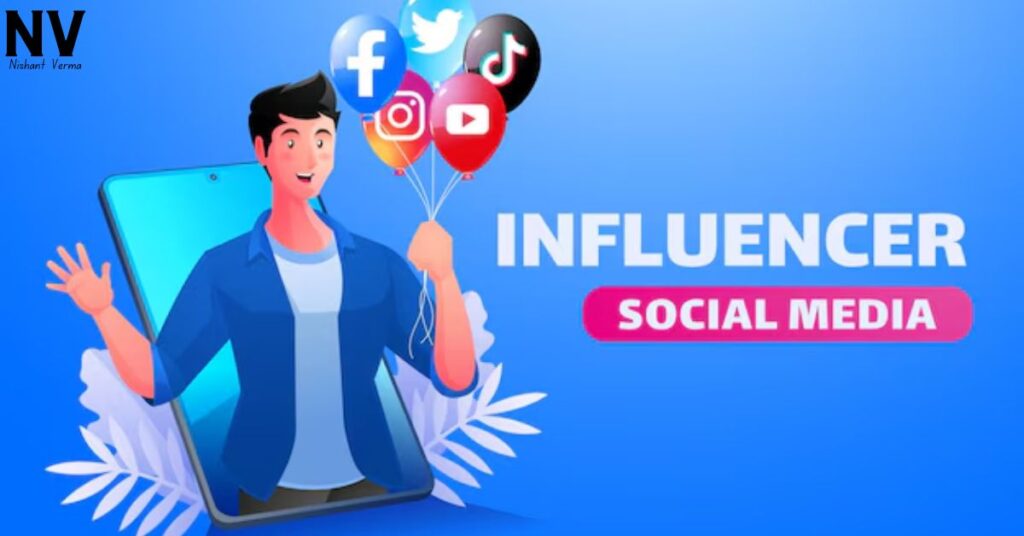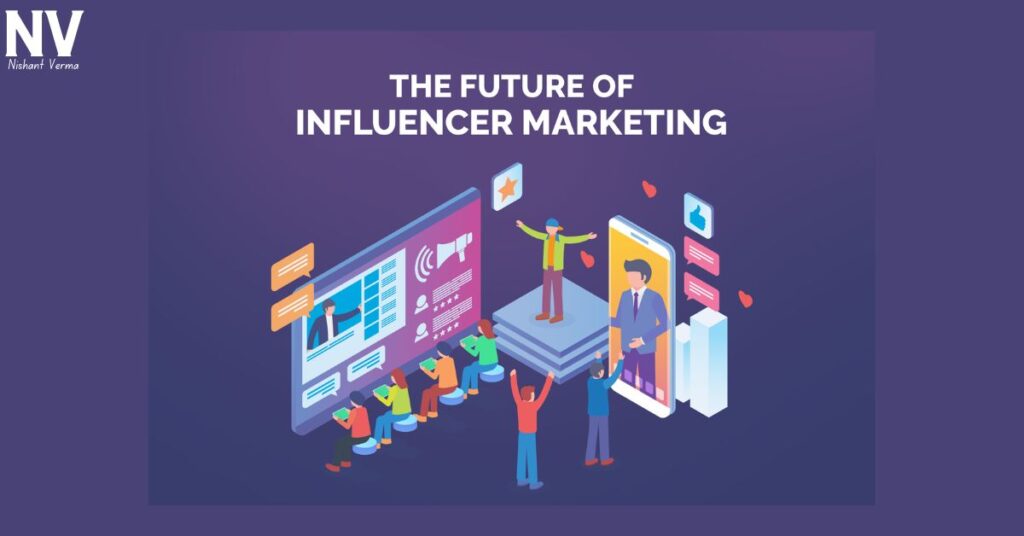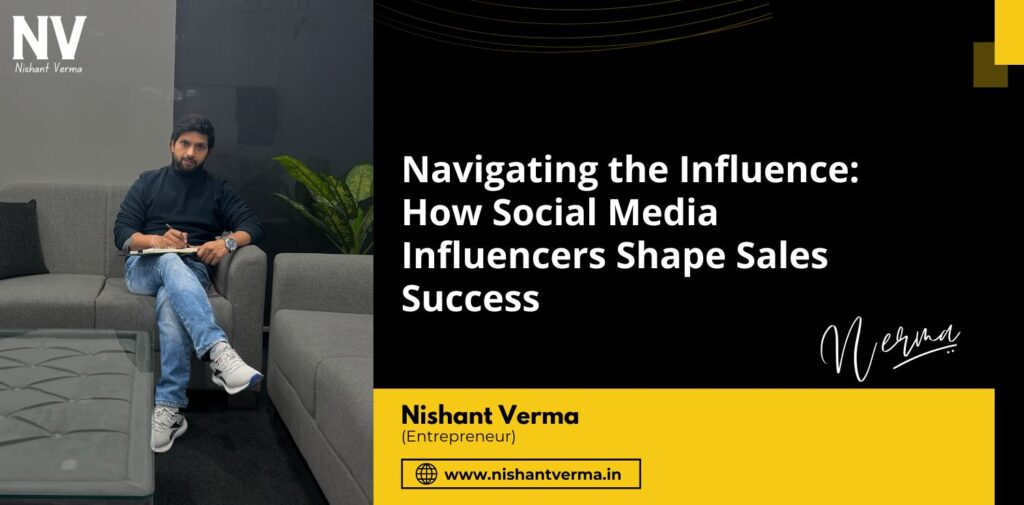In the digital era, the rise of social media influencers has transformed the landscape of marketing and sales. These individuals, armed with charisma and a significant following, hold the power to sway consumer decisions. This article delves into the captivating realm of social media influencers, unraveling their influence on sales and exploring the symbiotic relationship between influencers, brands, and consumers in a language that’s easy to grasp.

Chapter 1: The Emergence of Social Media Influencers
1.1 Who Are Social Media Influencers?
Social media influencers are like the trendsetters of the online world. They are individuals who have amassed a considerable following on platforms such as Instagram, YouTube, TikTok, and more. Their influence stems from their ability to engage and connect with their audience.
1.2 The Evolution of Influencer Marketing
Influencer marketing is like a digital revolution in the marketing landscape. Brands recognize the power of influencers to authentically reach and resonate with their target audience, giving rise to partnerships that extend beyond traditional advertising.
Chapter 2: Understanding the Influence Equation
2.1 The Trust Factor
Influencers are trusted voices in a sea of content. Their authenticity and relatability build trust with their audience, making recommendations and endorsements more impactful than conventional advertisements.
2.2 Niche Appeal
Influencers often cater to specific niches. Whether it’s beauty, fitness, travel, or gaming, their content resonates with a targeted audience, creating a unique appeal that traditional advertising struggles to achieve.

Chapter 3: The Dynamics of Influencer-Brand Partnerships
3.1 The Win-Win Collaboration
Influencer-brand partnerships are like a dance of mutual benefit. Brands gain exposure to the influencer’s audience, while influencers receive compensation for their role in promoting products or services.
3.2 Authenticity in Partnerships
Authenticity is the cornerstone of successful influencer marketing. Brands seek influencers whose values align with theirs, ensuring that endorsements feel genuine and resonate with the audience.
Chapter 4: The Impact on Consumer Behavior
4.1 From Inspiration to Action
Influencers have the power to turn inspiration into action. A recommendation from a trusted influencer can prompt followers to explore, purchase, or engage with a brand, creating a tangible impact on consumer behavior.
4.2 The FOMO Effect
The Fear of Missing Out (FOMO) is a powerful force. Influencers, through their engaging content, create a sense of exclusivity and urgency that drives followers to join the latest trends or try recommended products.
Chapter 5: Types of Social Media Influencers
5.1 Macro-Influencers
Macro-influencers, like celebrities of the digital world, have massive followings. While their reach is broad, their influence lies in their ability to shape mainstream trends.
5.2 Micro-Influencers
Micro-influencers, on the other hand, have smaller but highly engaged audiences. Their strength lies in their niche expertise and authentic connections with followers.
5.3 Nano-Influencers
Nano-influencers are like the friendly neighbors of social media. With a modest following, they often have a strong local or community influence, creating authentic connections.
Chapter 6: The Challenges and Criticisms
6.1 Authenticity Concerns
As the influencer landscape evolves, concerns about authenticity arise. Some influencers face criticism for promoting products solely for financial gain, leading to questions about the sincerity of endorsements.
6.2 Oversaturation of Sponsored Content
The influx of sponsored content can dilute the impact of influencer endorsements. Audiences may become desensitized to promotional material, requiring influencers to strike a balance to maintain credibility.
Chapter 7: Measuring Influencer Marketing ROI
7.1 Engagement Metrics
Measuring the success of influencer marketing involves analyzing engagement metrics such as likes, comments, shares, and click-through rates. These metrics provide insights into how well the audience is interacting with the content.
7.2 Conversion Tracking
For brands focused on sales, conversion tracking is essential. Utilizing unique tracking links or discount codes tied to influencer promotions helps assess the direct impact on sales generated through their influence.
Chapter 8: Influencers and E-Commerce
8.1 Shoppable Influencer Content
Social media platforms are evolving to accommodate e-commerce features. Shoppable posts and links enable influencers to seamlessly connect their audience with products, streamlining the purchasing process.
8.2 Influencer-Owned Brands
Some influencer-Owned Brands take their influence to the next level by launching their brands. Leveraging their brand equity, they create products that resonate with their audience, fostering a deeper connection.

Chapter 9: The Future of Influencer Marketing
9.1 Continued Rise of Video Content
Video content, particularly on platforms like TikTok and YouTube, is gaining prominence. The future of influencer marketing involves a continued focus on engaging and dynamic video content.
9.2 Authenticity as a Priority
As influencer marketing matures, authenticity will remain a priority. Brands and influencers will need to navigate partnerships that align with shared values to maintain credibility.
9.3 Regulation and Transparency
The evolving landscape prompts increased scrutiny and calls for regulation and transparency. Influencers and brands alike will face pressure to adhere to ethical guidelines and disclose sponsored content transparently.
Chapter 10: Influencer Marketing Success Stories
10.1 Daniel Wellington’s Instagram Campaign
Exploring how Daniel Wellington, a watch brand, strategically collaborated with influencers to create a global trend, showcasing the power of influencer marketing in driving brand awareness and sales.
10.2 gymshark’s Fitness Influencer Strategy
Analyzing how Gymshark, a fitness apparel brand, leveraged fitness influencers to build a community-driven brand, highlighting the synergy between influencers and niche markets.
10.3 Kylie Jenner’s Cosmetic Empire
Examining Kylie Jenner’s journey from reality TV star to a billionaire businesswoman, emphasizing the role of her personal brand and influencer status in the success of Kylie Cosmetics.
Chapter 11: Conclusion
In conclusion, the influence of social media influencers on sales is a dynamic force reshaping the marketing landscape. The authentic connections influencers forge with their audience, coupled with their ability to drive trends and consumer behavior, make them powerful partners for brands. As the influencer marketing journey continues to unfold, businesses and influencers must navigate challenges, prioritize authenticity, and adapt to the evolving expectations of their audience. The relationship between influencers and sales is symbiotic, creating a digital ecosystem where trust, engagement, and impact converge to shape the future of marketing and commerce.




